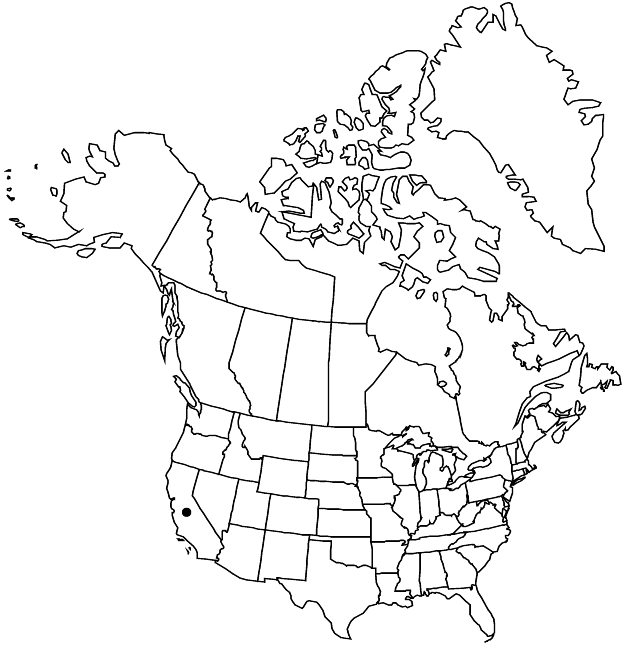Difference between revisions of "Chorizanthe uniaristata"
Proc. Amer. Acad. Arts 8: 195. 1870.
FNA>Volume Importer |
imported>Volume Importer |
||
| Line 8: | Line 8: | ||
}} | }} | ||
|common_names=One-awn spineflower | |common_names=One-awn spineflower | ||
| + | |special_status={{Treatment/ID/Special_status | ||
| + | |code=E | ||
| + | |label=Endemic | ||
| + | }} | ||
|basionyms= | |basionyms= | ||
|synonyms= | |synonyms= | ||
| Line 47: | Line 51: | ||
|publication title=Proc. Amer. Acad. Arts | |publication title=Proc. Amer. Acad. Arts | ||
|publication year=1870 | |publication year=1870 | ||
| − | |special status= | + | |special status=Endemic |
| − | |source xml=https:// | + | |source xml=https://bitbucket.org/aafc-mbb/fna-data-curation/src/2e0870ddd59836b60bcf96646a41e87ea5a5943a/coarse_grained_fna_xml/V5/V5_961.xml |
|subfamily=Polygonaceae subfam. Eriogonoideae | |subfamily=Polygonaceae subfam. Eriogonoideae | ||
|genus=Chorizanthe | |genus=Chorizanthe | ||
Latest revision as of 22:15, 5 November 2020
Plants spreading or ascending, 0.2–0.6(–0.8) × 0.5–4(–5) dm, appressed-pubescent. Leaves basal; petiole 0.5–2 cm; blade oblanceolate, 0.5–1.5(–2) × 0.2–0.8 cm, thinly pubescent. Inflorescences with involucres in small open clusters 0.5–1.5 cm diam., greenish to grayish or reddish; bracts 2, sessile, usually leaflike, oblanceolate to elliptic, 0.5–1.5 cm × 1.5–5 mm, gradually reduced and becoming scalelike at distal nodes, linear, aciculate, acerose, 0.4–1.2 cm × 1–2(–3) mm, awns straight, 1.5–4 mm. Involucres 3–10, grayish to reddish, urceolate, slightly ventricose basally, 2–3 mm, without scarious or membranous margins, slightly corrugate, densely grayish-pubescent; teeth widely spreading to divergent, unequal, 0.3–0.5 or 3–6 mm; awns straight or uncinate, unequal, with longer anterior one straight, 2.5–5.5 mm, others spreading, uncinate, 0.3–0.5 mm. Flowers included or only slightly exserted; perianth bicolored with floral tube greenish white and tepals white, cylindric, 2–3 mm, sparsely pubescent; tepals connate 2/3 their length, dimorphic, linear-oblong, those of outer whorl spreading, narrowly oblong, 1.5 times longer than those of inner whorl, rounded but with minute cusp or 3 teeth apically, those of inner whorl erect to slightly spreading, acute, entire apically; stamens 3, included; filaments distinct, 1–2 mm, glabrous; anthers white, ovate, 0.4–0.5 mm. Achenes brown, globose-lenticular, 2–3 mm. 2n = (78), 80, (82).
Phenology: Flowering Apr–Jul.
Habitat: Sandy to gravelly talus or clay flats and slopes, mixed grassland and chaparral communities, pine-oak woodlands
Elevation: 800-1900 m
Discussion
Chorizanthe uniaristata is scattered in the Inner Coast Ranges and across the Transverse and Tehachapi ranges to the southern Sierra Nevada.
One-awn spineflower is a polyploid, but whether an autopolyploid or an autoallopolyploid has not been determined. It has the smallest meiotic chromosomes observed by C. B. Hardham (1989).
Selected References
None.
